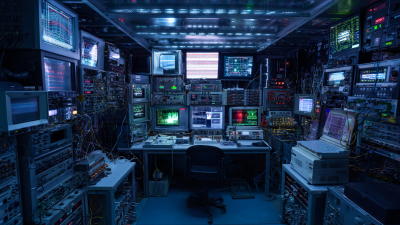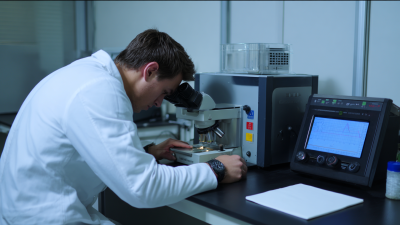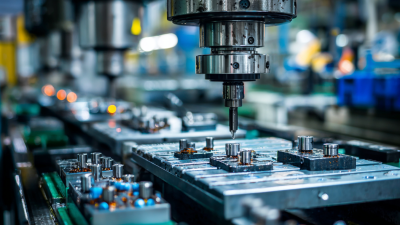How to Effectively Use Measuring Instruments: A Comprehensive Tutorial for Beginners
In the realm of science and engineering, the accurate use of measuring instruments is essential for obtaining reliable data and insights. According to a recent report by the International Society for Measurement and Control, nearly 70% of professionals in the field acknowledge that improper handling of measuring tools can lead to significant errors in experimental results, costing businesses millions in lost time and resources. As industries continue to evolve, the demand for precision in measurement has surged, with the global measuring instruments market projected to reach $24 billion by 2027.

This tutorial aims to equip beginners with the foundational skills required to effectively utilize measuring instruments, ensuring they can confidently navigate the complexities of measurement in their respective fields. With practical tips and strategies, learners will be better prepared to make accurate measurements that are critical for success in both academic and professional settings.
Types of Measuring Instruments: An Overview of Common Tools and Their Uses
When it comes to measuring instruments, a variety of tools are available for beginners to familiarize themselves with. The most common instruments include rulers, calipers, micrometers, and thermometers. Each of these tools serves a specific purpose and is essential for achieving accurate measurements in different fields. Rulers and tape measures are fundamental for linear measurements, while calipers are ideal for more precise readings, particularly in mechanical settings.
In addition to these, a micrometer is indispensable for measuring small dimensions with high accuracy, often used in engineering and manufacturing. Thermometers, on the other hand, are vital for gauging temperature in applications ranging from laboratory experiments to cooking. Understanding the unique features and appropriate applications of each tool allows beginners to select the right instrument for their specific tasks, setting a strong foundation for effective measurement techniques in various projects and disciplines.
Understanding Accuracy and Precision in Measurements: Key Concepts for Beginners
When embarking on the journey of using measuring instruments, it's crucial for beginners to grasp the concepts of accuracy and precision. Accuracy refers to how close a measurement is to the actual or true value, while precision relates to the consistency of repeated measurements. For instance, if you were measuring the length of a table, achieving accuracy means your measurement closely matches the real length, whereas precision ensures repeated measurements yield similar results. Understanding these distinctions helps in selecting the right instrument for your specific needs.
Tips for achieving accuracy include calibrating your instruments regularly. Calibration ensures that your tools reflect true measurements and helps in minimizing errors. Additionally, always consider environmental factors such as temperature and humidity, which can affect certain instruments. For precision, practice the same measuring technique each time. Consistency in your method reduces variability and ultimately leads to more reliable data. Using the right approach to measurement will not only enhance your skills but also build a strong foundation in the world of measurement science.
The Role of Calibration: Ensuring Reliability in Measuring Instruments
Calibration plays a crucial role in ensuring the reliability of measuring instruments, particularly in fields requiring precise readings. For instance, in high-voltage measurement, accuracy is paramount, yet it can be challenging due to the instruments potentially altering the state of what they measure. Regular calibration checks can mitigate discrepancies, ensuring that devices remain accurate over time. This process not only enhances measurement precision but also instills confidence in the data being collected, which is vital for industries relying on consistent results.
In recent advancements, machine learning techniques are being employed to calibrate low-cost sensors effectively, such as those measuring nitrogen dioxide levels. By leveraging global data scaling and neural network surrogates, calibration methods are evolving to accommodate cost-effective solutions while maintaining high accuracy. This shift demonstrates the growing necessity for reliable calibration methods across various applications, from air quality monitoring to agricultural studies, underscoring the essential nature of calibration in achieving dependable and valid measurements.
Examples of Measurement Standards: How Industry Benchmarks Influence Practices
In the realm of precision measurement, industry benchmarks play a crucial role in guiding practices and ensuring compliance with standards. For instance, the International Organization for Standardization (ISO) reports that companies adhering to ISO 9001 standards experience 20% higher productivity levels, largely attributed to the accurate use of measuring instruments in quality management processes. These benchmarks not only enhance operational efficiency but also significantly reduce errors, thereby ensuring that products meet customer expectations.
Moreover, organizations like the NIST facilitate the development of measurement standards that industries rely on. According to a 2022 NIST report, companies using calibrated instruments according to established standards can reduce production costs by up to 15% through decreased waste and rework. This emphasizes the importance of calibration and adherence to measurement standards as foundational practices for any business striving to improve quality and efficiency while maintaining competitiveness in the marketplace.
Best Practices for Using Measuring Instruments: Tips from Experts and Industry Data
Using measuring instruments effectively is crucial across various fields, from supply chain management to health care. To ensure accurate measurements, it is essential to follow best practices recommended by experts. One key tip is to always calibrate your instruments before use. This step helps in minimizing errors and ensures the consistency of your measurements, especially in high-resistance electrical measurements where precision is vital.
Another important practice is to maintain a clean and controlled environment when performing measurements. External factors like temperature, humidity, and even dust can affect the accuracy of your readings. Experts suggest that using dedicated measuring stations can reduce these discrepancies and help achieve reliable results. Additionally, familiarize yourself with the instrument's manual to understand its proper operation and troubleshooting techniques. This familiarity proves invaluable in both everyday use and when dealing with unexpected challenges.
Finally, document your findings meticulously. Recording your measurements and any anomalies helps in analyzing trends over time and enhances data reliability. Whether assessing market size or monitoring health metrics, accurate measurement techniques bolstered by solid documentation are indispensable for informed decision-making.
Related Posts
-

The Future of Test Instruments in Industry Innovation
-

5 Compelling Reasons to Choose Precision Devices for Your Next Project
-

7 Reasons Why Investing in Test Instruments Can Transform Your Quality Assurance Process
-

7 Essential Low Pressure Gauges You Need for Accurate Measurements
-

10 Essential Tips for Choosing the Best Digital Pressure Gauges in Your Industry
-

5 Reasons Why Precision Devices Are Essential for Modern Manufacturing Success
Contact
3295 Cobb International Blvd.
Kennesaw, GA 30152
800-367-1377
sale@patiostools.com
Info
© 2023 - Marsh Instruments


